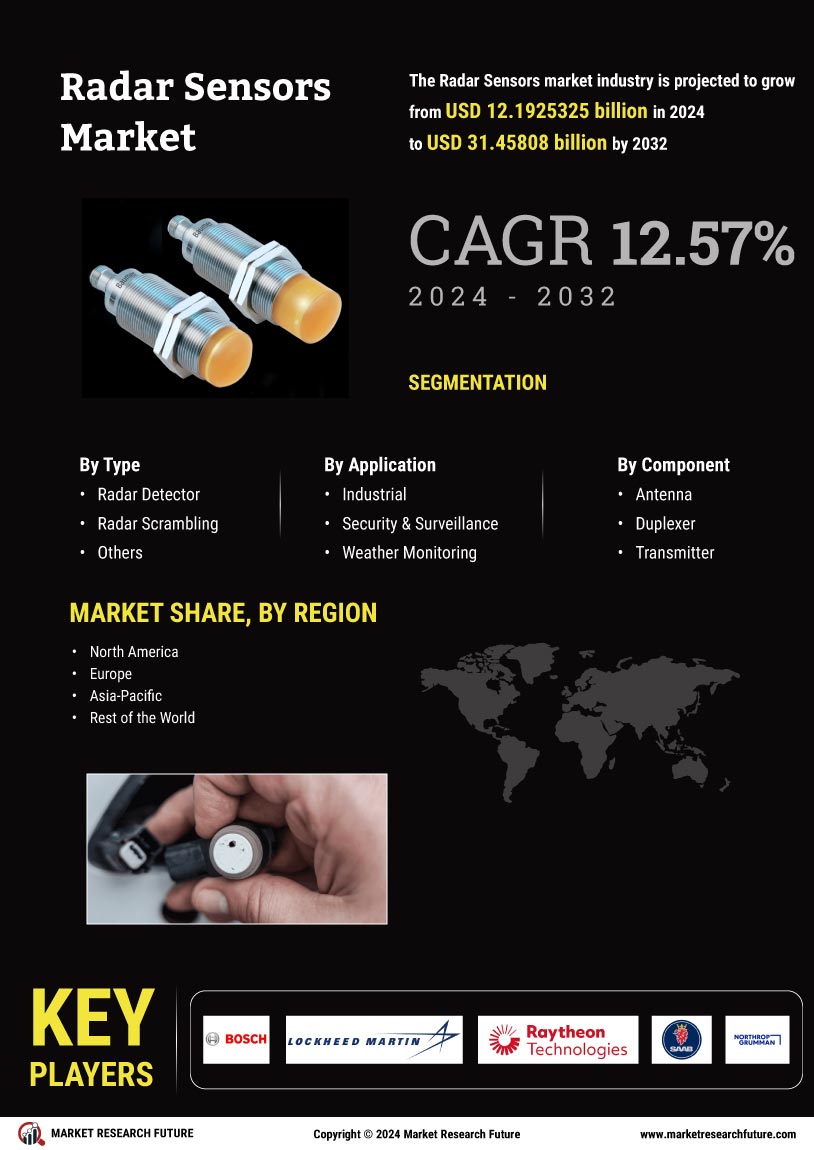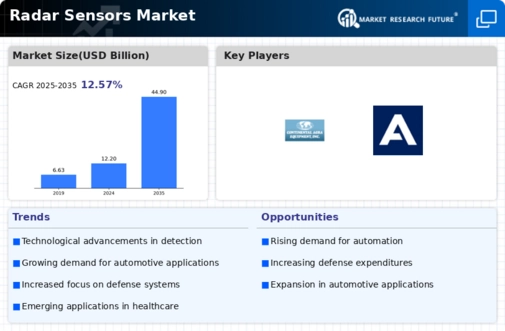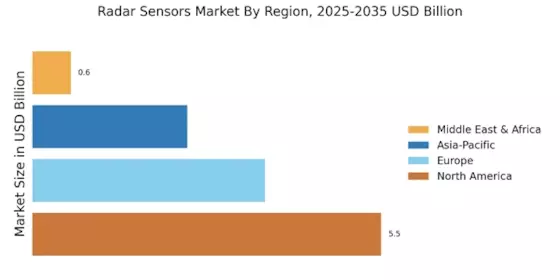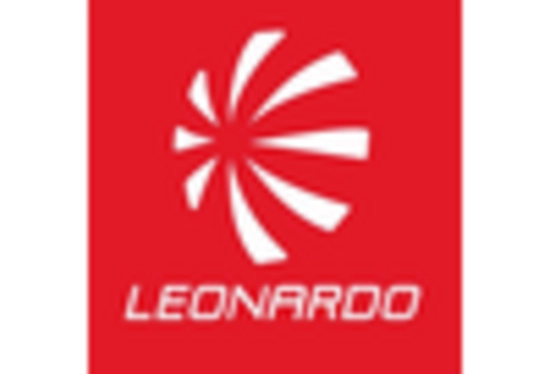Expansion of Smart City Projects
The expansion of smart city projects is significantly influencing the Radar Sensors Market. As urban areas increasingly adopt smart technologies to improve infrastructure and public safety, radar sensors are becoming integral to various applications, including traffic management and surveillance. The market for radar sensors in smart city initiatives is expected to grow at a CAGR of around 12% in the coming years. This growth is driven by the need for real-time data collection and analysis to enhance urban living conditions. Moreover, the integration of radar sensors with IoT devices is likely to create new opportunities for innovation within the Radar Sensors Market, fostering a more connected and efficient urban environment.
Defense and Security Applications
The defense and security sector remains a crucial driver for the Radar Sensors Market, as nations prioritize national security and surveillance capabilities. Radar sensors are essential for applications such as border security, air traffic control, and military reconnaissance. The global defense spending is projected to increase, with radar technologies being a focal point for modernization efforts. In 2025, the defense segment is anticipated to represent a significant portion of the radar sensor market, reflecting the ongoing demand for advanced surveillance systems. This trend underscores the importance of radar sensors in enhancing situational awareness and operational effectiveness, thereby solidifying their role within the Radar Sensors Market.
Growing Demand in Automotive Sector
The automotive sector is a significant driver for the Radar Sensors Market, primarily due to the increasing implementation of advanced driver-assistance systems (ADAS). As vehicles become more automated, the need for reliable radar sensors to facilitate features such as adaptive cruise control and collision avoidance systems is escalating. In 2025, it is estimated that the automotive segment will account for over 40% of the total radar sensor market share. This trend is further supported by regulatory mandates for enhanced safety features in vehicles, which are likely to boost the demand for radar technologies. Consequently, the Radar Sensors Market is poised for substantial growth as automotive manufacturers invest in these critical technologies.
Technological Advancements in Radar Sensors
The Radar Sensors Market is experiencing a surge in technological advancements, particularly in signal processing and sensor miniaturization. Innovations such as phased array radar and frequency-modulated continuous wave (FMCW) radar are enhancing detection capabilities and accuracy. These advancements are likely to drive the adoption of radar sensors across various sectors, including automotive and aerospace. The market is projected to grow at a compound annual growth rate (CAGR) of approximately 10% over the next five years, indicating a robust demand for advanced radar technologies. As industries increasingly prioritize safety and efficiency, the integration of cutting-edge radar systems is becoming essential, thereby propelling the Radar Sensors Market forward.
Emerging Applications in Industrial Automation
Emerging applications in industrial automation are contributing to the growth of the Radar Sensors Market. Industries are increasingly adopting radar sensors for non-contact level measurement, object detection, and process automation. The ability of radar sensors to operate in challenging environments, such as extreme temperatures and dusty conditions, makes them particularly valuable in manufacturing and logistics. The industrial segment is expected to witness a CAGR of approximately 9% over the next few years, driven by the need for efficiency and safety in operations. As companies seek to optimize their processes, the integration of radar technologies is likely to become more prevalent, further enhancing the Radar Sensors Market.


















Leave a Comment